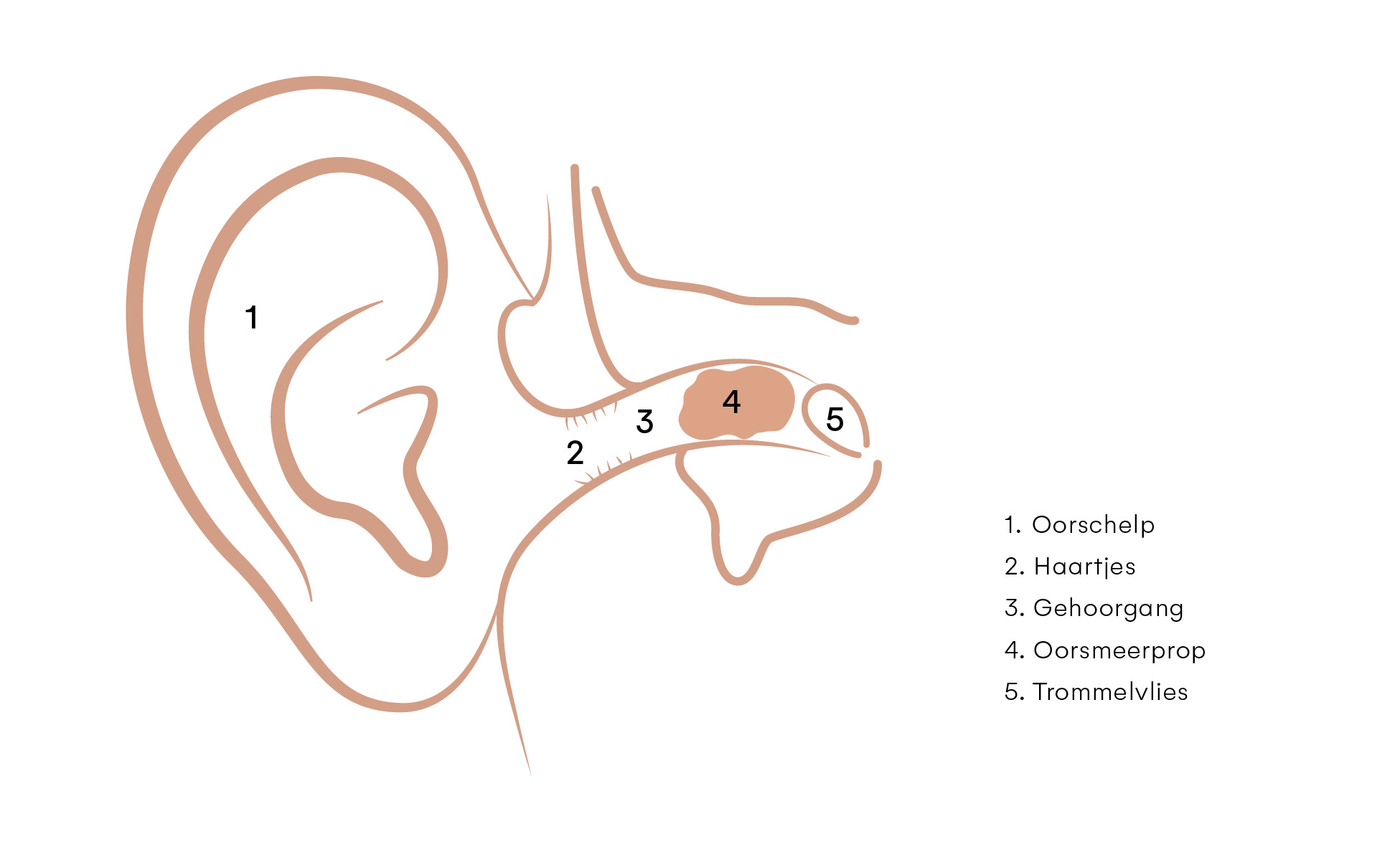
All about earwax in children
Earwax is often seen as something dirty even though everyone has some earwax. This is a good thing too because healthy ears should always have some earwax. But what exactly is it and what is it for? Find out everything you need to know about (excess) earwax in your child here: its cause, function and treatment.
What is earwax
Earwax is a composition of sebum, hairs and keratin from shed skin flakes. Whether earwax is wet or dry in texture varies from person to person; this is genetically determined. As you get older, the colour and texture of earwax changes. Earwax is produced by more than a thousand glands in the outer part of the ear canal. It is produced by the sebaceous glands and sweat glands.
The function of earwax
Many people think earwax is dirty and gross but did you know that earwax has some important functions? Earwax is somewhat oily and therefore acts as a water repellent. It thus protects the skin of the ear canal from the following things:
- Moisture
- Dehydration
- Dirt, dust and small insects
- Bacteria and fungi (it acidifies the environment for bacteria)
A healthy ear canal cleans itself of too much earwax; creamy earwax becomes dry and granular at some point. The skin of the ear canal renews itself from the eardrum, taking the earwax out with it. Earwax is also brought to the exit of the ear canal as chewing, yawning and talking massage the jaw, bringing out particles of earwax.
Excess earwax, how it occurs
Every child has their own type of earwax production. Some children produce a little while others have more earwax. If more earwax is produced than drained, a build-up can occur which can lead to an ear plug.
The main cause of excess earwax or an ear plug is children picking at their ears. This pushes the earwax back into the ear canal, adding extra stimulation to the glands and producing more earwax.
Besides picking at the ears, cotton buds, earplugs or hearing aids can also push back the earwax, causing an accumulation. Too much hair and eczema or diabetes are other possible causes of excess wax. Ultimately, blocking the wax from going outside is the biggest culprit for excess wax in both children and adults.
How to recognise a blocked ear
Your child may suffer from a blocked ear when they:
- Has pain in the ear
- Can't hear as well
- Has a blocked feeling in the ear
- Has a blocked or pressing sensation in the ear
- An itching in the ear
- Suffers from dizziness

What to do if your child has excess earwax
If your child suffers from excess earwax, there are several options to treat it.
1. With a cotton swab
You can use a cotton swab to remove the earwax on the outside of the ear. As long as the swab remains visible, there is no problem, but do not go too far into the ear with the swab as this will cause problems.
2. With lukewarm water
Besides treating with a cotton swab, you can choose to rinse the ear with lukewarm water and remove earwax yourself. There are several products that make earwax removal at home with water easier, such as Max the earwax remover from KIDSNER that is specially designed for children.
3. See the GP
Finally, you can choose to go to the GP to remove your child's excess earwax.
When to see a GP
Take your child to the GP when he or she hears less and/or has other symptoms that indicate excess wax or an ear plug. The GP can then clean the ears by spraying water into the ear canal. When the water then comes out, the excess earwax comes with it. This treatment is normally painless and takes a few seconds.